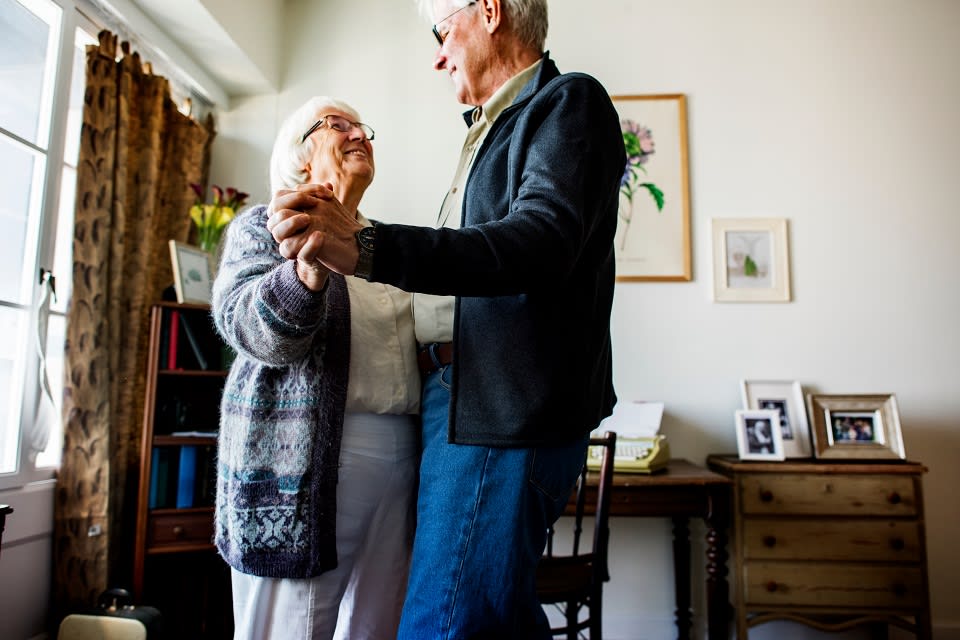
6 Winter Activities for Seniors

While winter can make it difficult for seniors to keep up with activities, there are plenty of ways to stay active, including dancing, singing, yoga, walking, lifting weights, and swimming. Physical activity is vital to seniors’ overall health, and movement relieves tension, reduces anxiety, and supports the nervous system. Creating a fun schedule of indoor activities can lead to long-lasting health benefits and opportunities for bonding. Best of all, these activities require little to no equipment and are easy to do.
Let our care assessment guide you
Our free tool provides options, advice, and next steps based on your unique situation.
Key Takeaways
- Mental and physical activities boost seniors’ health. It's important to find ways to help your loved one keep their mind and body active all year for optimum health benefits.
- Winter activities are easy to plan. Many activities, like yoga or dancing, can be enjoyed at home during the colder months with minimal equipment.
- Activities promote socialization. By planning activities with senior loved ones, you can reduce the risk of senior isolation and loneliness.
- Senior living communities offer activities. Many senior living communities provide frequent on-site events and activities to help seniors remain active and engaged.
1. Dancing
It’s recommended that seniors get at least 30 minutes of daily activity,[01] and dancing has been shown to be one of the most powerful forms of exercise for keeping the body and brain healthy. The best part is, all you need is a clear spot on the floor and some upbeat music.
Any form of dancing can be beneficial, but the greatest benefit is found when dancing with a group or partner. Dancing with others promotes connection, which can reduce the risk of senior isolation. Planning regular workouts also contributes positively to stimulating seniors’ mental health.
If your loved one can’t attend a dance class, consider trying one of the following indoor activities for seniors:
- Put on a favorite musical and dance along to the numbers
- Play the video game Just Dance
- Follow along with a video dance class on YouTube
It can be helpful for seniors to start with slow tunes to loosen up their muscles. Stretching and warming up are typically recommended before physical activities. If you or your senior loved one becomes winded, make sure to pause and catch your breath until you both feel ready to start dancing again.
2. Singing
Singing is an excellent activity for seniors with limited mobility. Plus, seniors don’t have to be classically trained to enjoy the benefits, as singing aids in breath control and relaxation. Remind your loved one to keep their voice and body hydrated while belting their favorite tunes. Begin by choosing a favorite:
- Hymn
- Holiday carol
- Nursery rhyme
- Opera
- Musical
- Album
3. Lifting weights
For seniors, lifting weights at home or in a gym can enhance their strength and offer numerous other health benefits. A gym membership isn’t just for muscle-bound 20-year-olds. People from all walks of life can take advantage of dumbbells, kettlebells, barbells, and other equipment at their local gym.
Call around to learn which gyms can accommodate your senior loved one’s physical needs. If your loved one feels self-conscious, ask about what time of day the gym is the quietest. Many gyms also offer introductory sessions with fitness experts who can show them how to safely use the equipment.
If home workouts are preferred, there are options that don’t involve state-of-the-art equipment. You can buy a sturdy exercise ball to strengthen core muscles and a few weights. For example, five pound weights can be the perfect way to help seniors strengthen their muscles with light weight training.
It can be beneficial for their safety to have someone keep an eye on them while using any weights or equipment. Even if your loved one doesn’t think they’ll need assistance, you should offer to spot them.
4. Yoga
Yoga is gentle, low-impact exercise that involves holding a variety of poses or positions while focusing on breathing and relaxing. Many seniors can enjoy an array of health benefits by practicing yoga regularly:[03]
- Stretching while posing relaxes stiff muscles, promotes circulation, and reduces stress.
- Twisting the body can improve digestion, facilitate spinal rotation, and help relieve back pain.
- Yoga inversion, such as in a downward-facing dog, can help drain lymph nodes and improve blood circulation.
- Yoga helps seniors work on their strength, balance, and flexibility.
There are plenty of yoga activities for seniors, including chair yoga, which may be the easiest way to get started. It can also be helpful to find a class with an instructor who has worked with seniors in the past, as they can determine which movements are the most senior friendly.

Let our care assessment guide you
Our free tool provides options, advice, and next steps based on your unique situation.
5. Swimming
Swimming is an excellent indoor activity for seniors to enjoy year round because it helps improve balance, endurance, flexibility, and strength. Even if you’re loved one is not a strong swimmer, a dip in the pool can have a great benefits.
Swimming often helps seniors:[02]
- Strengthen muscles
- Maintain bone health
- Improve mental health
- Reduce swelling
- Improve circulation
Plan ahead to maximize the pool trip experience, and consider the following ideas:
- Swimming laps or engaging in games can promote movement.
- Consider bringing a beach ball for a low-impact game of catch in the pool.
- Water walking and water aerobics are additional alternatives that don’t require prior swimming experience.
Lastly, you can call around or search online to find pools that offer senior exercise classes with guided instruction.
6. Walking
Walking provides opportunity for exploration and relaxation, and all that’s needed is a good pair of shoes. Although walking outdoors provides the most benefit, your senior loved one may need to find an indoor spot during the cold and icy months.
Check out the following places in your area where seniors can walk indoors:
- Community center
- Library
- Indoor walking track
- Mall
- Local university
- Botanical greenhouse
- Museum
Here are a few walking-related tips:
- Advise your loved one to wear durable shoes, stay in well-lit areas, and walk with a friend if possible.
- If your loved one walks at a local university, suggest they go between classes or on weekends to avoid heavy foot traffic, crowds, or fast-moving pedestrian areas.
- You can also accompany them or find a local walking club for company, which also promotes healthy socialization.
- For their safety, make sure they inform someone of their whereabouts, as well as when they return home from their walk.

Talk with a Senior Living Advisor
Our advisors help 300,000 families each year find the right senior care for their loved ones.
Discover more activities in senior living
Senior living communities offer a diverse calendar of events and winter activities tailored to seniors’ likes and interests. These year-round activities provide beneficial opportunities for seniors to socialize with friends, fellow residents, and family members
Speak with a Senior Living Advisor to find a community that matches your loved one’s activity preferences, needs, and budget — all at no cost to your family.
National Institute on Aging. (2021, January 29). Four types of exercise can improve your health and physical ability.
Centers for Disease Control and Prevention. (2022, February 18). Health benefits of swimming.
The Johns Hopkins University (2024). The 9 benefits of yoga for seniors.
Senior living options in all states
The information contained on this page is for informational purposes only and is not intended to constitute medical, legal or financial advice or create a professional relationship between A Place for Mom and the reader. Always seek the advice of your health care provider, attorney or financial advisor with respect to any particular matter, and do not act or refrain from acting on the basis of anything you have read on this site. Links to third-party websites are only for the convenience of the reader; A Place for Mom does not endorse the contents of the third-party sites.
Make the best senior care decision
Make the best senior care decision